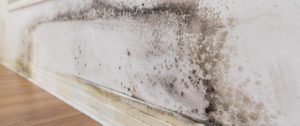Preserving historic buildings involves unique challenges, particularly when dealing with black mould, which poses serious health and structural risks. This post explores effective strategies for identifying, removing, and preventing mould in such treasured structures.
What Causes Black Mould in Historic Buildings?
Historic buildings are particularly susceptible to mould due to their age and construction materials. Poor ventilation, high humidity, and inadequate waterproofing can create ideal conditions for mould growth. Understanding the specific environmental factors and building vulnerabilities that contribute to these conditions is crucial for effective mould management.
Health Risks & Structural Damage
Black mould is not just unsightly; it’s dangerous. It can cause severe health issues, including respiratory infections, allergies, and asthma. Moreover, it can lead to significant structural damage to historic properties, as mould deteriorates wooden beams, plasters, and other materials, compromising the building’s integrity.
Identifying Black Mould in Heritage Properties
Detecting mould early is key to preventing widespread damage. Signs of black mould include visible growth, a musty smell, and evidence of moisture on walls or ceilings. Regular detailed inspections should be conducted in known problem areas to catch mould growth before it becomes severe.
Methods for Safely Removing Black Mould
Removing mould from historic buildings must be done with care to avoid damaging delicate materials. Techniques include gentle cleaning with specialised solutions and employing professional stone restoration teams skilled in working with historic structures. This section would detail specific, safe cleaning methods recommended for delicate surfaces.
Preventative Strategies to Avoid Future Mould Growth
Prevention is better than cure, especially in historic buildings. This section would discuss strategies such as improving indoor ventilation, using dehumidifiers, and ensuring that gutters and roofs are well-maintained to prevent water ingress.
Conclusion
Mould can be a formidable enemy in the preservation of historic buildings, but with the right knowledge and tools, it can be effectively managed. This post underscores the importance of regular maintenance, early detection, and the use of appropriate remediation techniques to protect and preserve our architectural heritage.
Contact Paramount Pointing & Restoration today for a free quote today.


